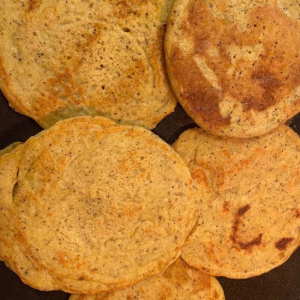
Newari Bara Woh: A Culinary Gem of Nepal
Nestled in the heart of Nepali cuisine, Newari Bara Woh stands as a testament to the rich culinary heritage of the Newari community. This beloved dish, also known simply as “Bara,” is a savory lentil pancake that has been delighting palates for generations. Originating from the Kathmandu Valley, Bara Woh has become an integral part of Newari festivals, celebrations, and everyday meals, embodying the essence of Newari culture and tradition.
Stock Photos and Videos of Nepal
Shutterstock Alamy Pond5 Dreamstime 500px
The Art of Crafting Bara Woh
Soaking and Grinding
The process begins with soaking black lentils overnight, allowing them to soften. The next day, the lentils are ground into a smooth paste using a traditional stone grinder or modern appliances.
Seasoning the Batter
The ground lentil paste is then seasoned with a blend of spices, including cumin, ginger, and garlic. Salt is added to taste, creating a perfectly balanced flavor profile.
Shaping and Cooking
The seasoned batter is shaped into small, round patties and fried in oil until golden brown and crispy on the outside, while remaining soft and fluffy on the inside.
Nutritional Value and Health Benefits
Protein-Rich
Bara Woh is an excellent source of plant-based protein, making it a nutritious option for vegetarians and vegans. The black lentils used in the dish are packed with essential amino acids, supporting muscle growth and repair.
Fiber and Minerals
The lentils in Bara Woh provide a good amount of dietary fiber, promoting digestive health. They are also rich in iron, potassium, and magnesium, contributing to overall well-being and energy levels.
Spice Benefits
The spices used in Bara Woh, such as cumin and ginger, offer additional health benefits. These ingredients are known for their anti-inflammatory properties and potential to aid digestion.
Cultural Significance in Newari Traditions
Festival Favorite
Bara Woh plays a central role in many Newari festivals, including Sithi Nakha and Yenya (Indra Jatra). It is offered to deities and shared among community members as a symbol of unity and celebration.
Ritual Significance
In certain Newari rituals, Bara Woh is used as an offering to ancestors and gods. Its circular shape is believed to represent the cycle of life and the continuity of traditions.
Social Bonding
Preparing and sharing Bara Woh is a communal activity that strengthens social bonds within Newari families and neighborhoods. It often brings multiple generations together in the kitchen.
Symbol of Hospitality
Offering Bara Woh to guests is considered a gesture of warmth and hospitality in Newari culture. It is often served alongside other traditional dishes to welcome visitors and celebrate special occasions.
Regional Variations of Bara Woh
Region | Variation | Unique Ingredients |
Kathmandu | Classic Bara | Black lentils, ginger, garlic |
Bhaktapur | Wo | Added green lentils, buffalo meat |
Patan | Bara Tway | Served with spicy sauce (tway) |
Pairing Bara Woh: A Culinary Adventure
Local Brews
Pair Bara Woh with traditional Newari rice beer (thon) or the popular Nepali beer Gorkha for a perfect blend of flavors. The crispy texture of Bara complements the refreshing taste of these local beverages.
Hearty Soups
Enjoy Bara Woh alongside a bowl of kwati, a nutritious soup made from nine different beans. This combination offers a balance of textures and a protein-rich meal that’s both satisfying and delicious.
Spicy Chutneys
Enhance the flavor of Bara Woh by serving it with an array of spicy chutneys. Popular options include tomato achar, sesame chutney, or the fiery Newari specialty, bara ko achar.
Tangy Pickles
Complement the savory taste of Bara Woh with a selection of tangy Newari pickles. Try gundruk (fermented leafy greens) or lapsi ko achar (hog plum pickle) for an explosion of flavors.
Modernizing Bara Woh: Contemporary Twists
Fusion Flavors
Innovative chefs are experimenting with fusion versions of Bara Woh, incorporating international flavors like pesto, sun-dried tomatoes, or even truffle oil to create unique taste experiences.
Gourmet Presentations
Upscale restaurants are elevating Bara Woh with artistic plating techniques, turning this humble street food into a fine dining experience. Mini Bara sliders and Bara Benedict are becoming popular brunch items.
Health-Conscious Variations
To cater to health-conscious diners, chefs are creating gluten-free and baked versions of Bara Woh, using alternative flours and cooking methods while maintaining the dish’s authentic flavors.
Global Recognition
As Nepali cuisine gains international attention, Bara Woh is finding its way onto menus worldwide, introducing this Newari delicacy to a global audience and sparking cross-cultural culinary innovations.
Preserving the Legacy of Bara Woh
Cultural Education
Newari community centers and schools are implementing programs to teach younger generations the art of making Bara Woh, ensuring that this culinary tradition continues to thrive.
Culinary Tourism
Food tours and cooking classes focused on Newari cuisine, including Bara Woh, are gaining popularity, allowing tourists and locals alike to experience the rich cultural heritage behind this iconic dish.
Recipe Documentation
Efforts are being made to document traditional Bara Woh recipes and techniques, preserving the authentic methods for future generations and culinary historians.
Festival Promotion
Newari festivals featuring Bara Woh are being promoted more widely, encouraging cultural exchange and appreciation for this beloved dish both within Nepal and internationally.
This was generated with the help of AI. This technology is new and constantly improving. Please verify the accuracy before sharing.
DISCLAIMER: This was generated with the help of AI. This technology is new and constantly improving. Please verify the accuracy before sharing.
